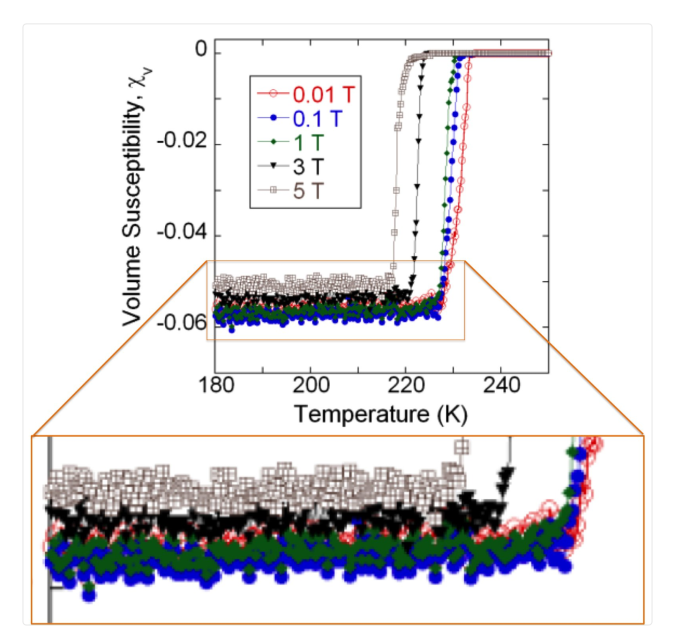
Figure 3(a) of Ref. [1], and a zoomed-in view of the data along the lower plateau of susceptibility.
For every green data point at T . 225 K, there is a blue data point that is displaced downward
by a constant amount – i.e., the two curves have the same pattern of noise.
“Given the extraordinary and exciting nature of this claim, it is worth examining the reported data closely. In this short comment I point out a very surprising feature in the data: an identical pattern of noise for two presumably independent measurements of the magnetic susceptibility,” he has commented in arXiv.
He refers to figure 3 (a) which plots the variation of magnetic susceptibility as a function of temperature under different applied external magnetic fields (0.01 tesla (T) to 5 T). What caught his attention was that the measurements obtained under different experimental conditions seem to have the “same pattern of noise”. “Both curves appear to be described by the same pattern of random noise…” Skinner notes. Noise, by its very virtue, will be random and finding nearly identical noise in measurements made under different conditions is therefore highly improbable.
In a series of tweets Skinner peals the onion one bit at a time. “Looking through the paper one evening, I got curious as to why one of their measurements showed lots of random noise at low temperature, but very little noise at high temperature. I thought I might be able to analyze the data by digitizing the plot.,” he tweeted. “But when I zoomed in closely on the figure, I saw something very surprising…They have the exact same pattern of random noise…” read other tweets.
“These are supposed to be two independent measurements, separated in time and in the value of certain parameters. An exactly duplicated pattern of noise is not something you would expect,” he says in another tweet.
Were the data manipulated?
So were these data manipulated by the two-member team from IISc? Responding to the critical comments made by Skinner, the IISc team had apparently responded to him saying: “Thanks for pointing this out! We hadn’t noticed this peculiar noise correlation. We don’t know its origin yet.”
And in another email to him the IISc researchers gave no indication of backing down. “They are REALLY not backing down from their claims. They emphasize that they are focused on providing validation of their data, and will only post new data or a response to my note once they have done so,” he tweeted.
Interestingly, some are trying to find a plausible explanation for finding nearly identical noise pattern. “Some physics professors are trying to put together the strongest possible plausibility argument for how two such curves really could have the exact same pattern of noise, his tweet reads about Prof. Pratap Raychaudhuri of TIFR, Mumbai.
Prof. Raychaudhuri, who does not have the raw data, writes on Facebook: “…By definition noise patterns are random and cannot reproduce… The Skinner report thus immediately raised a red flag of possible academic misconduct: carelessness or outright fraud. But could there be a different explanation?
“In this short note, I will argue that there could be an alternative possibility. The aim of this note is not defend Thapa and Pandey, but rather merely to present all possible scenarios that the community should think about.
“The central premise based on which the suspicion of academic misconduct arises is that the “noise” is repeating in independent measurements of susceptibility performed on the same sample in different magnetic field. This premise holds only if one can indeed identify the noise from the signal. But what if the component of the data that is identified as noise is not noise at all but is rather part of the signal?”
To this explanation by Prof. Raychaudhuri, Skinner has responded saying: “I am personally not convinced by his argument, since it fails to explain why the “perfect correlation” between two curves would suddenly disappear at a particular temperature. But I like the exercise of working from an assumption that the data is real and seeing where you get.”
One thing that Skinner makes abundantly clear in his tweets is the amount of restrain and caution that he had exercised before raising a red flag. “I was completely paralyzed by the question of what to do about it. I spent the next week vacillating between feeling like I had a duty to point this out publicly and feeling like to do so would be irresponsible.
“I talked, confidentially, to about a dozen experts in the field of superconductivity. I tracked down old theorists who had seen everything and prominent experimentalists and technicians who use the measuring equipment in question every day.
“In the end, the consensus was pretty clear: no one could imagine an explanation for how that pattern of duplicated noise could arise naturally. Which meant, at the least, that people thinking about the experiment needed to be aware of it.”
Yes, we need thorough report on noise.
This article put my brain in gear and tried to remember old times. This wouldn’t be the first time that reproducibe fluctuations would be seen in Physics. In the late 80’s and beginning of the 90’s this effect was seen in mesoscopic systems, therefore it may not be a bad idea to look into old literature before any accusations are made. Here is an article: Reproducible conductance fluctuations in macroscopic Anderson insulators
Shechao Feng and Jean-Louis Pichard
Phys. Rev. Lett. 67, 753 – Published 5 August 1991
Also search for the name Boris Altshuler.